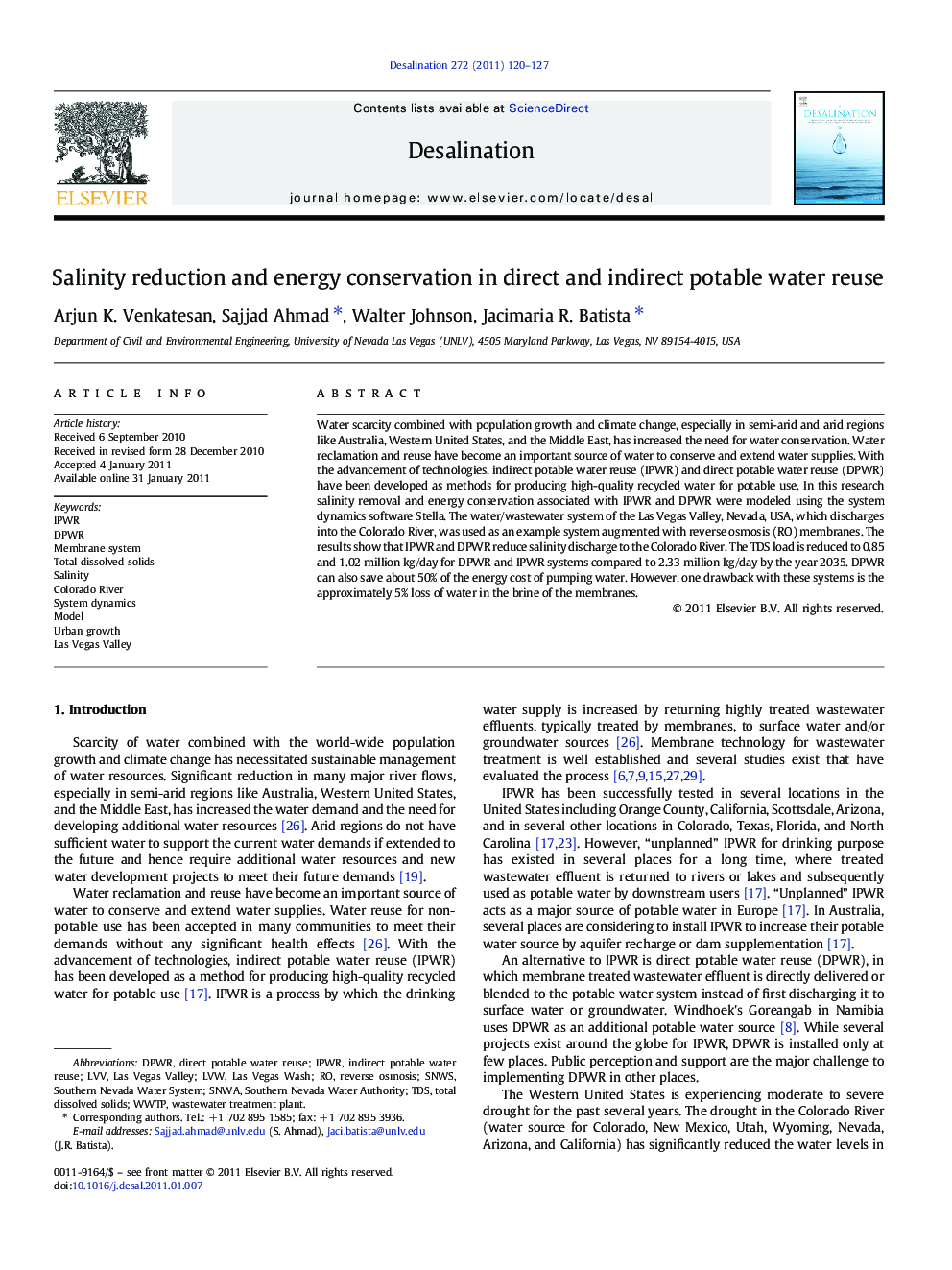| Article ID | Journal | Published Year | Pages | File Type |
|---|---|---|---|---|
| 625214 | Desalination | 2011 | 8 Pages |
Water scarcity combined with population growth and climate change, especially in semi-arid and arid regions like Australia, Western United States, and the Middle East, has increased the need for water conservation. Water reclamation and reuse have become an important source of water to conserve and extend water supplies. With the advancement of technologies, indirect potable water reuse (IPWR) and direct potable water reuse (DPWR) have been developed as methods for producing high-quality recycled water for potable use. In this research salinity removal and energy conservation associated with IPWR and DPWR were modeled using the system dynamics software Stella. The water/wastewater system of the Las Vegas Valley, Nevada, USA, which discharges into the Colorado River, was used as an example system augmented with reverse osmosis (RO) membranes. The results show that IPWR and DPWR reduce salinity discharge to the Colorado River. The TDS load is reduced to 0.85 and 1.02 million kg/day for DPWR and IPWR systems compared to 2.33 million kg/day by the year 2035. DPWR can also save about 50% of the energy cost of pumping water. However, one drawback with these systems is the approximately 5% loss of water in the brine of the membranes.
Research Highlights► System dynamics model for water reuse with an error of 2% has been developed. ► Salinity discharge to water bodies can be strongly reduced by wastewater reuse. ► Water loss in brines of reuse systems may be offset by pumping energy savings.
